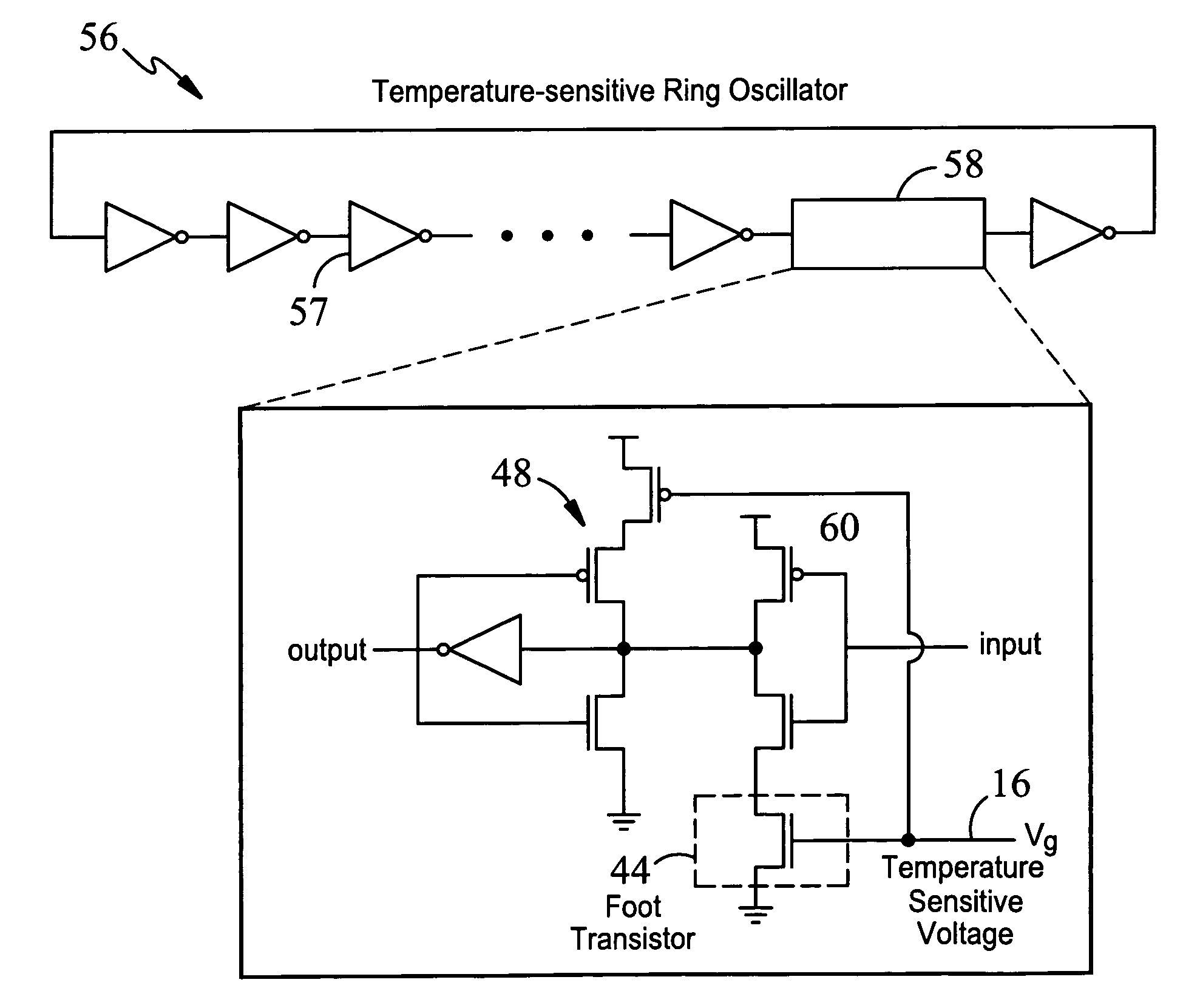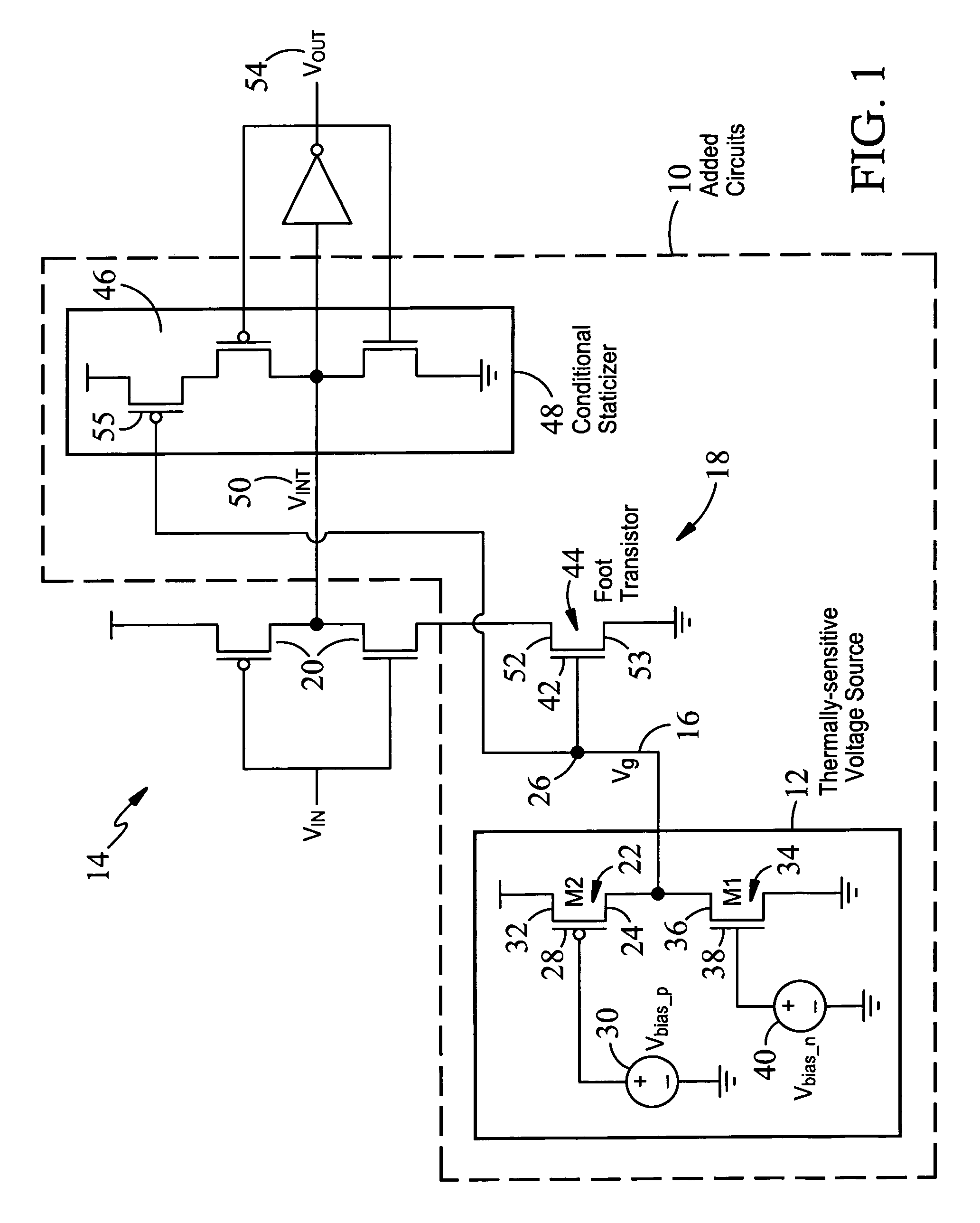Self-timed thermally-aware circuits and methods of use thereof
a thermally aware circuit and self-timer technology, applied in the field of delay circuits, can solve problems such as damage, circuits that overheat beyond specified operating conditions, and become progressively harder to synchronize computational operations with reference to a single global clock signal
- Summary
- Abstract
- Description
- Claims
- Application Information
AI Technical Summary
Benefits of technology
Problems solved by technology
Method used
Image
Examples
Embodiment Construction
[0033]The following description is presented to enable any person skilled in the art to make and use the invention, and is provided in the context of particular applications and their requirements. Various modifications to the preferred embodiments will be readily apparent to those skilled in the art, and the generic principles defined herein may be applied to other embodiments and applications without departing from the spirit and scope of the invention. Thus, the present invention is not intended to be limited to the embodiments shown, but is to be accorded the widest scope consistent with the principles and features disclosed herein.
A. Performance and Temperature Regulating System
[0034]FIG. 1 illustrates a system 10 that regulates gate delays, and thereby the performance, power consumption and temperature of an asynchronous digital circuit 14 in accordance with an embodiment of the present invention. System 10 includes an easily implemented thermally-sensitive voltage source 12 o...
PUM
 Login to View More
Login to View More Abstract
Description
Claims
Application Information
 Login to View More
Login to View More - R&D
- Intellectual Property
- Life Sciences
- Materials
- Tech Scout
- Unparalleled Data Quality
- Higher Quality Content
- 60% Fewer Hallucinations
Browse by: Latest US Patents, China's latest patents, Technical Efficacy Thesaurus, Application Domain, Technology Topic, Popular Technical Reports.
© 2025 PatSnap. All rights reserved.Legal|Privacy policy|Modern Slavery Act Transparency Statement|Sitemap|About US| Contact US: help@patsnap.com



